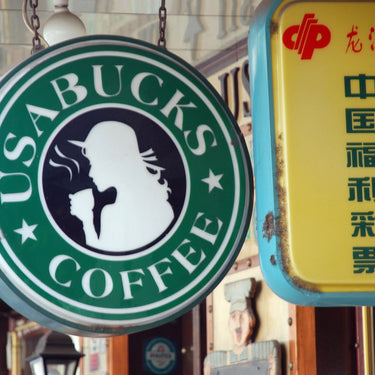We wanted to shine a spotlight on Rwandan Coffee - Africa is a big player in the coffee landscape - but the differences between regions are clear to taste. You can expect high acidity and a full bodied sweetness. Whilst Rwanda is famed for washed coffees, the less common 'natural' processed coffees can also be truly exceptional.

Rwanda is blessed with ideal coffee growing conditions that include high altitude, regular rainfall and volcanic soils with good organic structure.
Most of the farms or smallholdings in the country are usually situated somewhere between 1200m - 2000m above sea level. This high altitude is perfect for producing high quality coffees that are complex, sweet and distinct.
The local growing season typically begins in either September or October and continues until harvesting takes place between March and July. Within those months, the harvesting tends to peak from May onward.
Rwandan smallholders typically organise themselves into cooperatives and share the services of centralised wet-mills or washing stations.

Coffee Processing
Coffee generally undergoes the 'washed' process to take it from picked coffee cherry to dry seed/bean. Recent efforts to invest in the development of local communal washing stations has increased the quality and uniformity with which the coffee is processed. Many micro-crops make their way to each station and are combined based on quality of cherry. The introduction of more washing stations has further improved cup quality as each smallholder has further to travel, and the cherries are processed as close to time picked as possible.




Natural processing isn't uncommon in Rwanda, and top quality versions can fetch higher prices per/kg than the equivalent washed coffee. Less water and machinery is used, so arguably these coffees are more environmentally sustainable. The process can be risky and the weather conditions have to be just right. The controlled fermentation of the cherry pulp can accentuate the inherent fruit flavour of coffee from the region.

What can you expect from Rwandan Coffee?

Lighter roasts will offer more delicate fruits and florals notes with pleasant acidity. Whereas beans roasted medium to dark will offer up more flavours of caramelisation - a syrupy sweetness and bolder mouthfeel.
Northern Province: Balanced & Sweet - expect stone fruit, citrus and caramel tones.
Eastern Province: Is gaining a reputation for berry/forest fruit notes & rich chocolate
Southern Province: Higher elevation here produces your classic floral & citrus with a creamy/buttery texture.
Western Province: Expect more complex juicy & floral, the area near Lake Kivu is famed for high quality coffee production
A brief History
Like many of its East African neighbours, Rwanda began commercially cultivating coffee during European occupation and colonialization. In the 1930s Belgian colonialists planted exclusively high-yielding, low-cost varietals. There were no incentives to develop high quality varietals or to improve cup quality in any way. Taxes were high for producers, and colonialists sought to produce an abundance of coffee with little cost. Today nearly 75% of Rwanda’s lands are utilized for agriculture with nearly 35% of Rwandans classified as subsistence farmers, many of whom rely on coffee for a portion of their income.
By the 1990s, coffee was a main agricultural export even though market prices were low. Yet, in 1994, a genocide broke out where nearly 1 million people were killed, halting development and slowing any progression for almost an entire decade. The government initiated projects in the early 2000s to encourage Rwandans to grow speciality coffee to recover the economy and restore GDP. This then enabled Rwanda to access international buyers and create a niche agricultural market. In 2004, with the support of USAID, the first washing station was constructed and a Cup of Excellence auction was hosted which brought recognition to the “Land of a Thousand Hills” and established Rwanda as a producer of high-quality coffee.
There is a higher proportion of female coffee producers in Rwanda when compared with other coffee growing countries. Sadly this is a direct impact of the genocide in 1994, which killed many more men than women. This accelerated a change in law that enabled women and children to inherit land and to open bank accounts and gain education. It is also not uncommon to see women in management positions in mills, washing stations and cooperatives.

Challenges
Similar to Burundi, Rwanda also experiences the so-called ‘potato defect’ caused by a bacteria invading the coffee cherry leads to an unpleasant raw potato taste and aroma when brewed. It is virtually undetectable in the parchment or green coffee and normally only infects one individual bean.
Rwanda has also suffered some of the damaging consequences of high rainfall Rwanda's Nyabihu district was hit by devastating rains, leading to flooding and heavy mud slides - it is reported in May 2021 nearly 30 people lost their lives, 325 homes were destroyed as well as many livestock, coffee trees and other crops. As you can imagine it will take time for the region to recover.

A word from Ash, head of coffee...
Although the small country contributes only 0.2% of global coffee, it maintains a reputation for special quality and unique tasting notes. It largely remains an affordable alternative to Kenyan coffee, with many of the same fruit notes and unique acidity. Its rapid rise from commodity coffee producer to integral player in the speciality market makes Rwanda a powerhouse when it comes to high quality coffee production - and certainly one to watch over the coming years. Globally, coffee prices have skyrocketed, and as some of the more popular producing origins become prohibitively expensive for many, countries like Rwanda are ready to offer viable alternatives.
Shop our range of coffee beans today!






